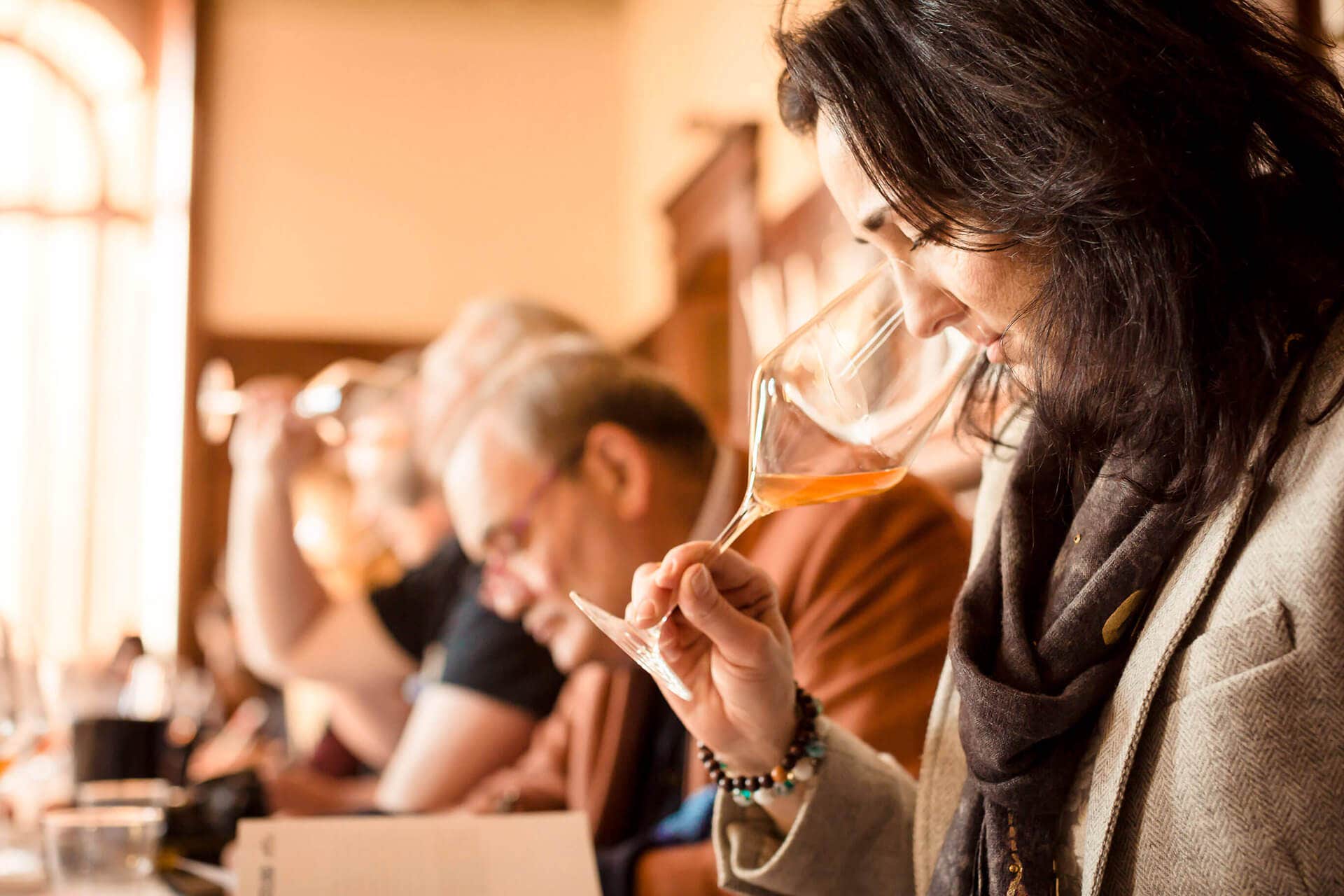On Nov. 18, I traveled in a virtual time machine via a vertical tasting of eight Nebbiolo-based wines from Alto Piemonte from 1842–1970.
The tasting, Assaggio a Nordovest (A Tasting of Northwest), was organized by the Associazione Vignaioli Colline Biellesi and took place at the stunning Villa Era on the outskirts of Biella in northern Piedmont.
Full disclosure: I participated in the tasting, as I provided historical background on the area’s long winemaking tradition for international attendees.
Even though I’ve tried older vintages from the area, this extraordinary lineup blew me away.
Besides the sheer wonder of trying such old wines, the tasting offered a potent reminder that wines, especially fine bottlings destined to age for years or decades, are undeniably alive. It also gave a rare glimpse into how Piedmont’s winemaking has evolved over the last 175 years.

Most importantly, the tasting demonstrated the greatness of Nebbiolo from this unique growing area. The wines all hailed from the Biella hills, where ancient, yellow marine sands are in proximity to Alpine foothills. Here, distinct day and night temperature swings prolong the growing season, which yields intense, fragrant and mineral-driven Nebbiolos that boast vibrant acidity and firm, refined tannins.
Daniele Dinoia, winemaker at Centovigne, admits no one is sure that the wines we tasted were made entirely with Nebbiolo.
“Nebbiolo, known locally as Spanna, has always been the most important grape in the Biella hills,” says Dinoia. “According to old documents and estate registers, we know some producers in and around Lessona made wines exclusively with Nebbiolo even back in the 19th century.
“But blending Nebbiolo with local grapes Vespolina, Croatina and Uva Rara has always been a popular tradition throughout Alto Piemonte. Some producers around Biella also blended with these grapes, to add fragrance and color and to soften Nebbiolo’s assertive tannins. I’m confident the wines are 80–100% Nebbiolo.”
The 1842 and 1896 wines were surprisingly sweet. Producers assert their 19th-century counterparts made the wines sweet “to satisfy market tastes of the time.” (Some things never change, apparently.) But I have my doubts.
This sweetness may result from the many technical challenges that these winemakers faced when they tried to ferment wines completely dry. But we’ll never know for sure.
Regardless, the 1897 example marked a pronounced shift in style, from sweet to dry wines. It was the tasting’s showstopper. While extremely mature, it boasted quintessential Nebbiolo sensations of tar, roses and dried cherry set against vibrant acidity. The 1970 offering was a mere youngster by comparison.
All the wines had a family resemblance, a fantastic testament to the area’s terroir. It was an incredible and, on some levels, a humbling experience to try wines with this much history.
Tasting Historic Wines from Alto Piemonte
(Note: with the exception of the 1970 and 1965, the wines only bore the name of the winery, or the type of wine as it was called at the time. Modern-day denominations were officially recognized in Italy starting with the 1966 vintage).
Tenute Sella 1970 Lessona
Luminous garnet in color, this 47-year-old is shockingly youthful for its age. It shows classic sensations of an adult Nebbiolo that include tar, flint, dried cherry and Alpine herb mingling with citrus zest. The salty finish is pure Lessona. Mature, but it still drinks beautifully.
Tenute Sella 1965 Lessona
Not an outstanding vintage, this is intact, but in decline. Light garnet color that drifts to pale brick along the borders, it offers mature aromas of maple syrup, dried rose petal and balsamic notes. The palate shows smoke, earth and flint that underscore dried apricot, citrus zest and a sprinkling of aromatic herb.
Villa Era 1960 Spanna di Vigliano Riserva Speciale
Garnet-brick colored, with earthy, inviting aromas of flint, asphalt, smoke and a whiff of cured meat. The bright, smooth palate offers tangerine zest, hazelnut, dark spice and a hint of dried berry alongside buffed tannins. An incredible showing for a 57-year-old wine.
Castello di Castellengo 1934
Flint and orange-zest aromas. Definitely mature but still intact, with dried sour cherry and white-pepper notes. Acidic verve and a tangy saline finish give it energy. This needed time to open up.
Castello di Montecavallo 1931
With a pale amber hue, this needed time to open up and eventually reveal aromas that bring to mind Vin Santo: spice, dried Mediterranean herb, nut and maple syrup that carry over to the palate along with fennel flavors and racy acidity. Very mature, but still alive and kicking.
Villa Era 1897 Vigliano Biellese
The most impressive wine at the tasting. The garnet, bronze-tinged color belies the wine’s advanced age, as do the intense aromas of tar, flint, dried rose and spice. The palate is extraordinarily youthful for its 120 years and shows delicate strawberry, grilled herb and cake spice alongside bright acidity and tannins polished to a high sheen. If only humans could age this gracefully.
Castello di Castellengo 1896
Gold-amber in color, this was undeniably sweet, with candied citrus zest, honeyed orange drop, dried apricot, toasted almond and marmalade flavors. It still has vibrant acidity. You would never guess it was Nebbiolo, but it’s definitely alive, with amazing energy.
Castello di Montecavallo 1842
Amber-colored, this offers aromas of balsamic herb and citrus zest that carry over to the sweet palate along with notes of orange jam, flint and honey. It may not be recognizable as a Nebbiolo and it’s decades past its ideal drinking window, but it still impresses with a vein of fresh acidity and remaining flavor.
Last Updated: May 4, 2023















